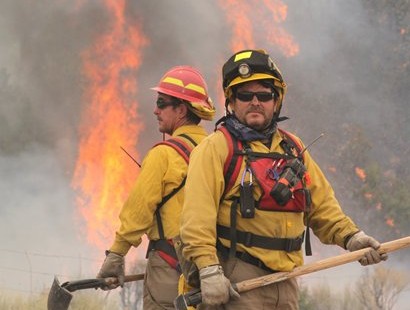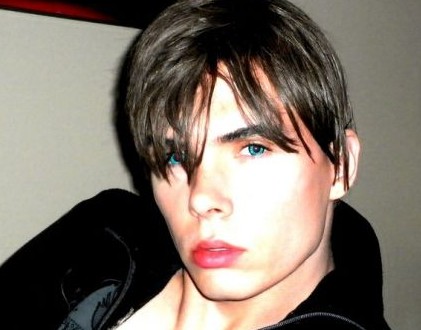1.VOA常速
【Iranian Homosexuals Speak Out About Persecution】伊朗同性戀者大談遭受迫害
 視頻下載(點(diǎn)擊右鍵另存為)
視頻下載(點(diǎn)擊右鍵另存為)
TEXT:Iranian President Mahmoud Ahmadinejad says they do not exist. And in Iran, merely trying to be themselves is a crime that brings shame on their families. But now, Iranian homosexuals are starting to speak out about what it means to be gay and about the lengths to which they have gone to escape persecution.
The day begins as normal for Arash and Nima. But for them, just walking out the door is a reminder they are no longer at home in Iran.
"“The LGBT (lesbian, gay, bi-sexual, transgendered people) are a part of vulnerable class of the Iranian society," Arash explained.
Arash left Iran for Turkey nine months ago. He now works as a filmmaker and shot a video to help document his new life.
Iran’s conservative Islamic laws leave little room for homosexuality. United Nations experts and rights groups have criticized the Iranian government for criminalizing all homosexual acts, making certain acts punishable by death. Iran has also come under fire for subjecting those suspected of homosexuality to arbitrary arrest and torture.
The issue is one that Iranians are slowly being forced to confront - often through film. Such films, though, are not being made in Iran.
And at least at the highest levels, denial is the rule - as evidenced by comments Iranian President Mahmoud Ahmadinejad made to students at New York’s Columbia University in 2007:
“In Iran we don't have homosexuals like in your country. In Iran we do not have this phenomenon, I don't know who has told you that we have it," Ahmadinejad declared.
Farid, another Iranian exile living in Turkey, said on YouTube the feeling of oppression permeates Iran's everyday life.
“When you walk down the street, you feel you are being assaulted from all sides," he said. "We [gay people] are being looked at like a third gender."
One place gay Iranians have found refuge is the United States, where despite controversy, some states and even Washington D.C., have been extending more rights to homosexuals, including the right to get married.
Mali Kisagari was born in Iran in 1958… and in 2004 she married her partner, Elizabeth Kristen, in California.
“In the U.S., people’s rights are respected," she noted. "When I entered the U.S., I found this is a place I can be myself.”
Such attitudes are a long way from being accepted in Iran. Still, from the Iranian diaspora, singers like Shohreh are pushing back - as in her music video.
“The reason why I used the homosexual flag in my video was to support these people,” she explained. “Families should know that their children should not be blamed for being homosexual. They have been homosexual since childhood."
For now, couples like Arash and Nima can only wonder what it would be like to live as themselves in their home country.
“I want to bring their face in front of [documentary] movie camera, so that the heterosexual class understands the gays better; so that a day may come that the two classes of people may coexist,” Arash said.
To many gay Iranians, that day still seems a long way off.
2.VOA 慢速
【Teaching Coffee Farmers About the Birds and the Bees】鳥兒和蜜蜂,咖啡種植者的好幫手
 視頻下載
視頻下載 MP3下載
MP3下載 同步字幕下載(下載方式均為:點(diǎn)擊右鍵另存為)
同步字幕下載(下載方式均為:點(diǎn)擊右鍵另存為)
TEXT:This is the VOA Special English Agriculture Report.
The University of Georgia is a respected research university. Thirty-five thousand students attend the main campus in Athens, Georgia, and extended campuses around the state. And among its areas of research is agriculture.
UGA has a center in San Luis de Monteverde in Costa Rica. This center is for students and visitors who want to learn more about farming and living in environmentally friendly ways.
Some students take a class called "Coffee: From Bean to Cup." Coffee is one of the most widely traded products in the world, and the most important agricultural product for Costa Rica.
Professor Valerie Peters teaches the class. Her students help her study coffee farms in an area called Finca la Bella. Farmers in this area agreed to grow their coffee sustainably , using methods that do less harm to the environment.
Most coffee farms in Costa Rica have one or two different kinds of trees to help shade the coffee plants from the sun. In Finca la Bella most farms have at least twenty kinds of trees. Many of the farmers have also planted more flowers. When there are more flowers and more kinds of trees, more bees will come to pollinate the coffee plants. Coffee plants can pollinate themselves, but bees help increase the harvest.
Professor Peters is working with her students to help teach farmers about the importance of bees and having more trees and flowers. "Many of the farmers commented that they never even thought of bees as having a role in their coffee production," she says.
Having more species of trees on coffee farms also provides more places for birds to live. If farmers have at least ten different kinds of trees per hectare, they may be able to have their coffee certified as "bird-friendly." This is done by the Smithsonian Migratory Bird Center in the United States. Bird-friendly coffee can sell for a higher price.
The University of Georgia is also helping farmers in Costa Rica increase their income through tourism. Professor Quint Newcomer directs this program. He says students help design tour routes through coffee farms.
QUINT NEWCOMER: "These farmers become our teachers. They are sharing their local knowledge about how to work the land in a really sustainable way, and they become the teachers. But then our students can also help provide them with ideas and recommendations about how to improve their tour. And the more they improve it, the more people want to go."
UGA Costa Rica, as the center is called, also plans to increase the amount of locally produced food it buys. The goal is to buy at least fifty percent locally by twenty-fifteen.
And when the center needs wood for building, it buys only wood grown locally without artificial chemicals.
And that's the VOA Special English Agriculture Report. You can find more stories about coffee at 51voa.com, where you can also find texts and MP3s of our programs. I'm Karen Leggett.
參考譯文:這里是美國之音慢速英語農(nóng)業(yè)報(bào)道。
喬治亞大學(xué)是一所受人尊敬的研究型大學(xué),有3.5萬名學(xué)生在喬治亞雅典主校區(qū)和該州其他分校區(qū)就讀,其研究領(lǐng)域之一便是農(nóng)業(yè)。
喬治亞大學(xué)哥斯達(dá)黎加的San Luis de Monteverde有一處中心,該中心是為那些想了解環(huán)境友好型農(nóng)業(yè)和生活而建立的。
有的學(xué)生上一門名叫“咖啡:從咖啡豆到咖啡杯”的課程,咖啡是全球交易最廣的產(chǎn)品之一,也是哥斯達(dá)黎加最重要的農(nóng)產(chǎn)品。
Valerie Peters教授講授這門課程,她的學(xué)生幫她研究Finca la Bella地區(qū)的咖啡農(nóng)場(chǎng),該地區(qū)的農(nóng)民同意用對(duì)環(huán)境危害小的方式進(jìn)行可持續(xù)的咖啡種植。
哥斯達(dá)黎加大部分咖啡農(nóng)場(chǎng)都有一到兩種樹木來為咖啡樹遮陰,而在Finca la Bella,大多數(shù)農(nóng)場(chǎng)至少有20種樹。許多農(nóng)民還種了很多花,花和樹木的種類越多,就有更多蜜蜂來為咖啡樹授粉。咖啡樹可自己授粉,但蜜蜂授粉可提高產(chǎn)量。
Peters教授和學(xué)生們讓農(nóng)民們明白蜜蜂的重要性,讓他們多種樹木和花兒。“許多農(nóng)民說,從未想過蜜蜂對(duì)咖啡產(chǎn)量起作用。”
在咖啡種植園種更多種類的樹木也能為鳥兒提供更多棲息地,如果農(nóng)民的在每公頃土地上至少種植10種樹木,他們的咖啡就可得到“鳥類友好”認(rèn)證,這是由美國史密森遷徙鳥類中心頒發(fā),獲得此認(rèn)證的咖啡能賣更高價(jià)錢。
喬治亞大學(xué)也幫助哥斯達(dá)黎加農(nóng)民通過旅游創(chuàng)收,Quint Newcomer教授指導(dǎo)該項(xiàng)目的實(shí)施,她說,學(xué)生們幫助設(shè)計(jì)咖啡農(nóng)場(chǎng)旅游線路。
Quint Newcomer:“這些農(nóng)民們就是我們的老師,他們與我們分享當(dāng)?shù)厝绾慰沙掷m(xù)種植的知識(shí),這樣就成了老師。但學(xué)生們幫他們?cè)诟纳坡糜紊铣鳇c(diǎn)子想建議。改善得越多,就有越多人想來。”
哥斯達(dá)黎加的喬治亞大學(xué)還計(jì)劃當(dāng)?shù)厥澄锏牟少徚浚繕?biāo)是在2015年之前至少購買當(dāng)?shù)厥澄锏?0%。
該中心還需要建筑用的木材,購買的是當(dāng)?shù)禺a(chǎn)的無人造化學(xué)品種植的木材。
注:本VOA慢速譯文由可可英語Sunny提供




















